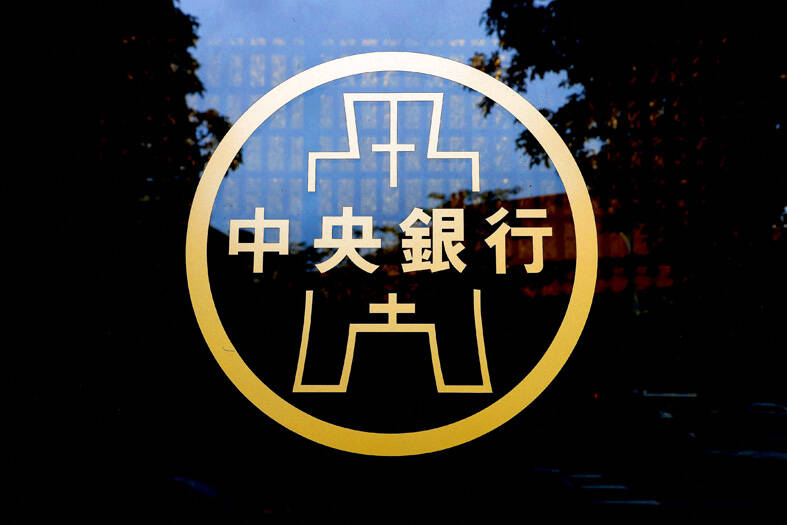Taiwan’s outbound direct investment reached a new high in the second quarter, as tech firms including Taiwan Semiconductor Manufacturing Co (台積電) and Hon Hai Precision Industry Co (鴻海精密) were keen to send funds abroad to expand their operations, the central bank said last week.
Data compiled by the central bank showed that outbound direct investment during the April-to-June period totaled US$10.7 billion, up from US$2.99 billion in the same period last year.
Taiwan’s net fund outflow in the second quarter hit US$14.57 billion in its financial account, which measures the flow of direct investment and portfolio investment, the central bank said, adding that the second quarter marked the 56th consecutive quarter of net fund outflows.

Photo: Reuters
The direct investment account recorded a net asset increase of US$6.54 billion in the second quarter. Of the components in the direct investment account, outbound direct investment by residents and inward direct investment by nonresidents posted net increases of US$10.7 billion and US$4.16 billion respectively, it said.
Taiwan’s portfolio investment account in the second quarter saw a net asset increase of US$13.06 billion. Of the components in the portfolio investment account, residents’ portfolio investment abroad registered a net increase of US$16.05 billion in the wake of a rise in holdings of outbound debt securities, the central bank said.
In addition, nonresidents’ portfolio investment posted a net increase of US$2.99 billion, mainly due to a rise in Taiwanese equity holdings by foreign investors, it added.
Meanwhile, Taiwan’s current account, which mainly measures the exports and imports of the nation’s merchandise and services, registered a surplus of US$21.82 billion in the three-month period.
The goods trade surplus fell by US$1.22 billion from a year earlier to US$20.82 billion, on the back of an increase in imports of integrated circuits, and information and communications technology products.
Meanwhile, the services account recorded a deficit of US$4.06 billion, up from a US$2.29 billion deficit a year ago, largely due to an increase in travel expenses overseas, the central bank said.
In the first half of this year, Taiwan’s financial account saw a US$43.59 billion net fund outflow, while its current account recorded a surplus of US$51.49 billion, the central bank said.
Over the past 56 quarters, accumulated net fund outflows hit almost NT$26.58 trillion (US$850 billion).
Addressing concerns that investors would keep moving funds out of the country and into US dollar-denominated assets, the central bank said net fund outflows were common among countries such as Taiwan, which have long-term current account surpluses.
Japan, Singapore, South Korea and Germany all have long-term current account surpluses and tend to record net financial account outflows, the central bank said.

Taiwan Semiconductor Manufacturing Co (TSMC, 台積電) last week recorded an increase in the number of shareholders to the highest in almost eight months, despite its share price falling 3.38 percent from the previous week, Taiwan Stock Exchange data released on Saturday showed. As of Friday, TSMC had 1.88 million shareholders, the most since the week of April 25 and an increase of 31,870 from the previous week, the data showed. The number of shareholders jumped despite a drop of NT$50 (US$1.59), or 3.38 percent, in TSMC’s share price from a week earlier to NT$1,430, as investors took profits from their earlier gains

In a high-security Shenzhen laboratory, Chinese scientists have built what Washington has spent years trying to prevent: a prototype of a machine capable of producing the cutting-edge semiconductor chips that power artificial intelligence (AI), smartphones and weapons central to Western military dominance, Reuters has learned. Completed early this year and undergoing testing, the prototype fills nearly an entire factory floor. It was built by a team of former engineers from Dutch semiconductor giant ASML who reverse-engineered the company’s extreme ultraviolet lithography (EUV) machines, according to two people with knowledge of the project. EUV machines sit at the heart of a technological Cold

Taiwan’s long-term economic competitiveness will hinge not only on national champions like Taiwan Semiconductor Manufacturing Co. (TSMC, 台積電) but also on the widespread adoption of artificial intelligence (AI) and other emerging technologies, a US-based scholar has said. At a lecture in Taipei on Tuesday, Jeffrey Ding, assistant professor of political science at the George Washington University and author of "Technology and the Rise of Great Powers," argued that historical experience shows that general-purpose technologies (GPTs) — such as electricity, computers and now AI — shape long-term economic advantages through their diffusion across the broader economy. "What really matters is not who pioneers

TAIWAN VALUE CHAIN: Foxtron is to fully own Luxgen following the transaction and it plans to launch a new electric model, the Foxtron Bria, in Taiwan next year Yulon Motor Co (裕隆汽車) yesterday said that its board of directors approved the disposal of its electric vehicle (EV) unit, Luxgen Motor Co (納智捷汽車), to Foxtron Vehicle Technologies Co (鴻華先進) for NT$787.6 million (US$24.98 million). Foxtron, a half-half joint venture between Yulon affiliate Hua-Chuang Automobile Information Technical Center Co (華創車電) and Hon Hai Precision Industry Co (鴻海精密), expects to wrap up the deal in the first quarter of next year. Foxtron would fully own Luxgen following the transaction, including five car distributing companies, outlets and all employees. The deal is subject to the approval of the Fair Trade Commission, Foxtron said. “Foxtron will be